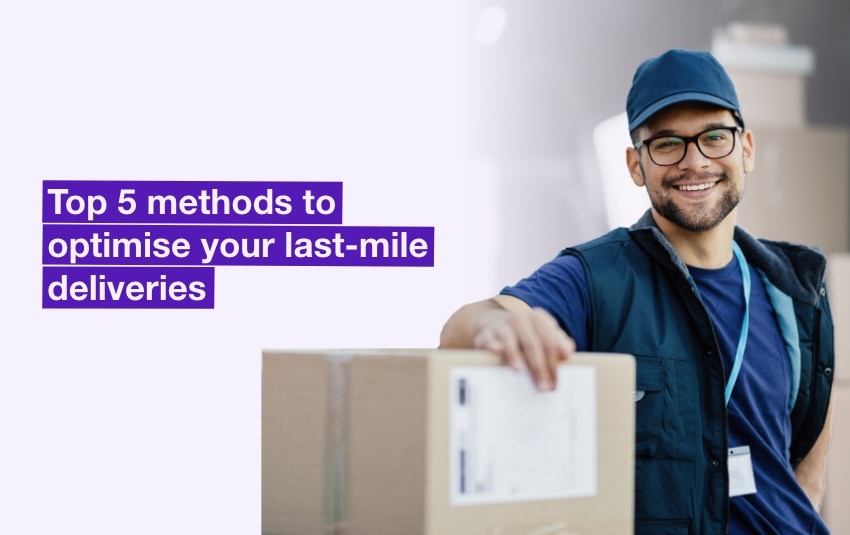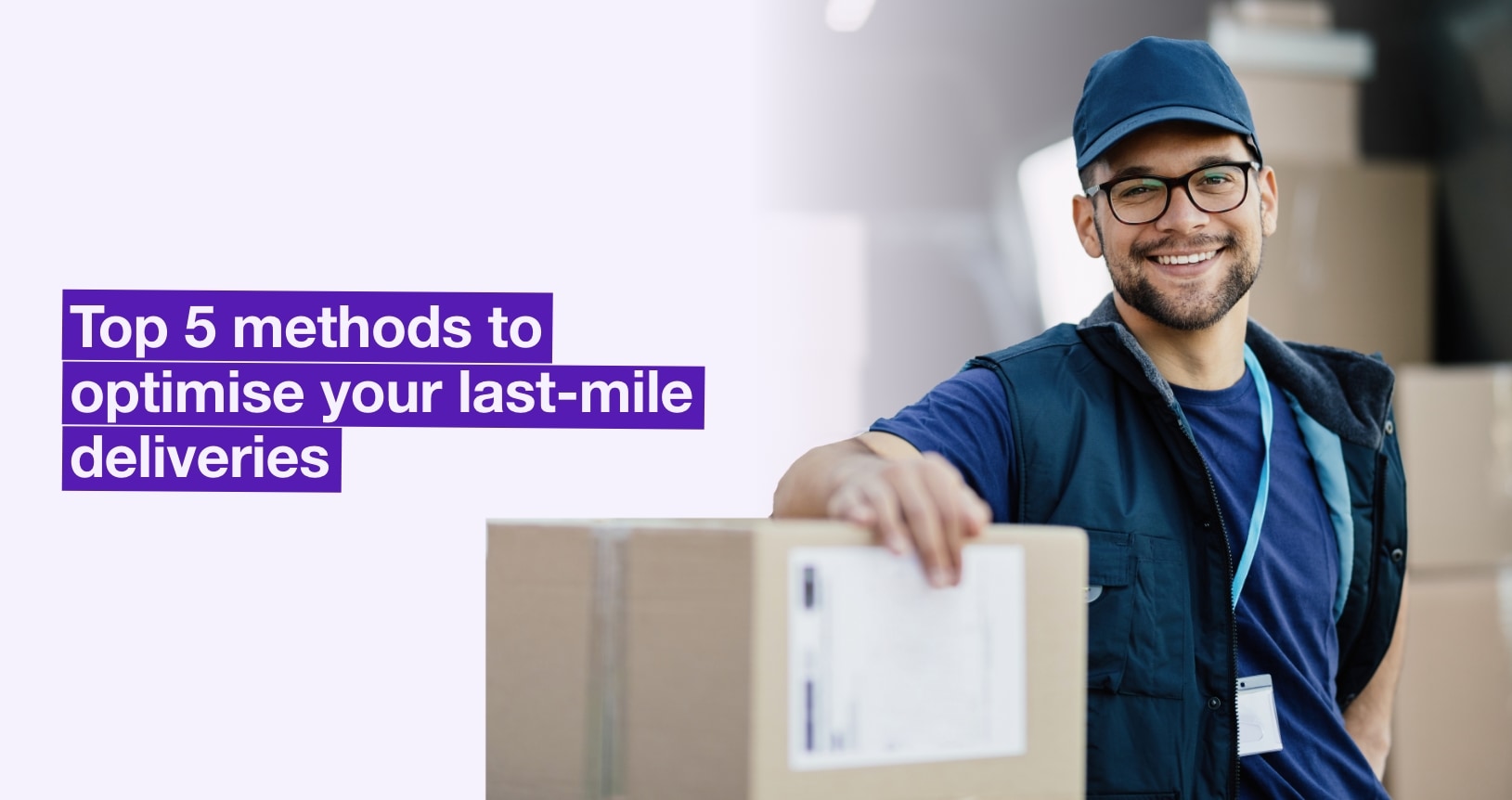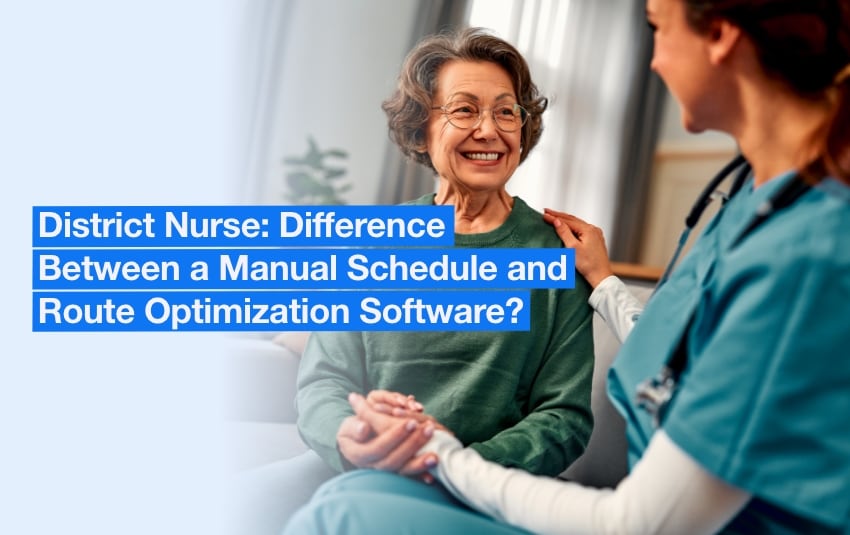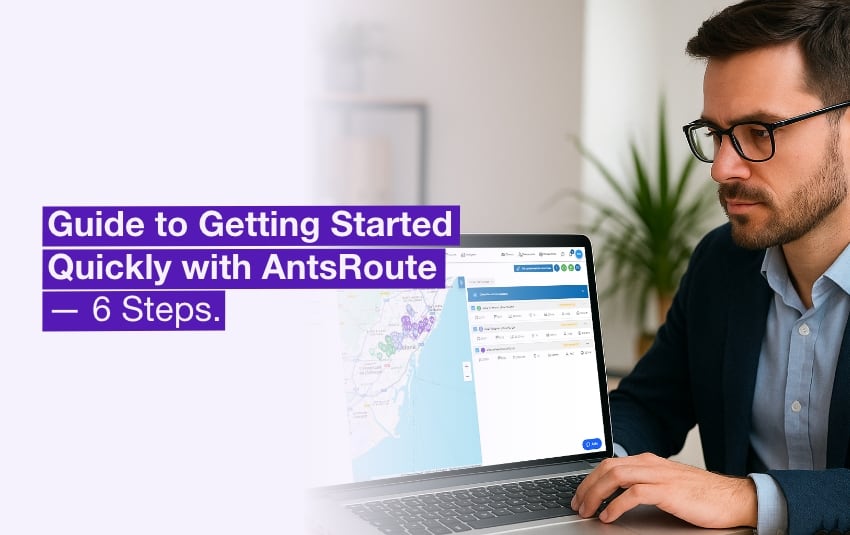Top 5 methods to optimise last-mile deliveries
Published on 15 June 2021 • Reading time: 6 min read
The last mile, the bridge between the last storage location and the final delivery address, is also the most challenging. It is the most expensive, the most challenging and the most polluting part of the supply chain. The last mile alone is responsible for up to 20% of total transportation costs and 30% of CO2 emissions! At the same time, consumers are demanding even faster deliveries, with a wide choice of locations and delivery times.
AntsRoute has listed 5 ways to improve the last mile delivery management, and successfully solve this new challenge.
Table of contents
- Pool the deliveries
- Use geographic route optimisation software
- Increase the number of delivery locations and times
- Provide alternative transportation methods
- Improve communication with customers
Optimising last-mile deliveries is a strategic challenge for transport professionals. It is the guarantee of meeting consumer expectations, while reducing the environmental impact in urban areas.
Pool the deliveries
According to the figures of the ADEME, the French agency for the environment and energy management, 1/4 of the kilometres travelled in the city to transport goods are done empty, while the average loading level of the vehicles is 67%. To optimise these trips and lost capacities, several solutions are available to the logistics managers.
The most accessible sharing solution is the freight exchange. Through these online marketplaces, companies with parcels to ship connect with carriers who want to optimise the trips of vehicles and their available capacities. This allows shippers to carry their goods at a lower cost, while limiting urban traffic jams. As a result of these freight exchanges, some wholesalers now outsource all of their deliveries.
Use geographic route optimisation software
The sharing of deliveries is a solution that does not work for all operators. In some cases, freight exchanges are not able to match supply and demand for transport. Some companies also want to continue to deliver directly, in order to guarantee the quality of the service from one end of the value chain to the other.
The most efficient way to optimise all transports of a company is to use a route planning software. For your pickup and delivery routes, our system calculates the optimal route based on many factors:
- The qualifications and licences of your drivers.
- The loading, unloading, or delivery slots requested by the customers.
- Business constraints: cold chain, health protocols, breaks, etc.
- The capacity of vehicles: weight, volume, energy autonomy, etc.
Today, there are so many factors to take into account that Operations Managers or Schedulers, even experienced one, can no longer build efficient routes without the help of this software.
By using our geographic optimisation software, most of our customers achieve savings of about 20% on the vehicles and trips. Without forgetting the time saved on administrative tasks!
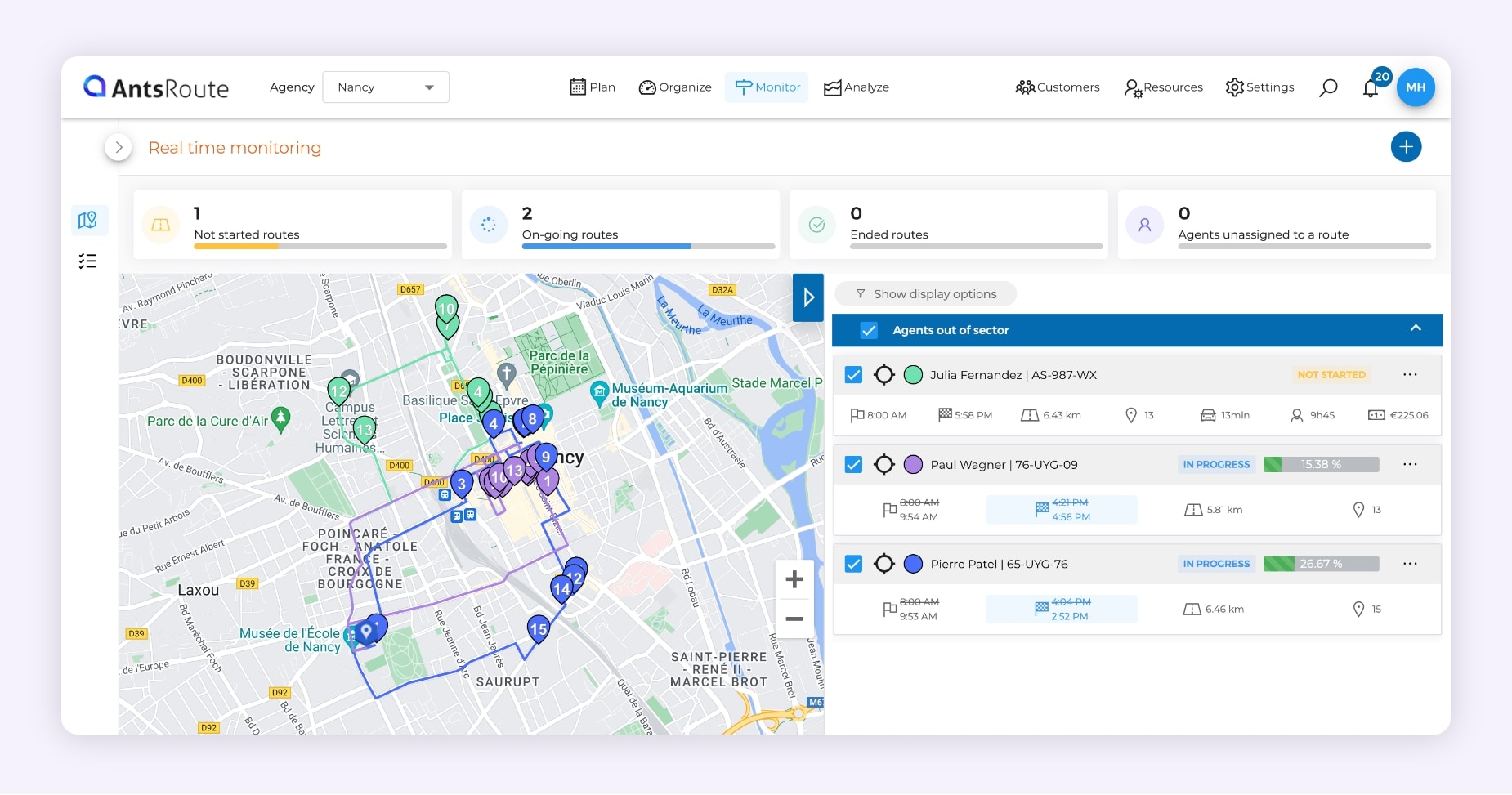
The AntsRoute route optimisation software.
Increase the number of delivery locations and times
The urban freight transport industry is a highly contradictory one. While the last logistics mile is the most expensive, it generates multiple disappointments for all stakeholders. Time wasted in traffic jams, absent customers, exhausted drivers, late deliverymen, drivers who never show up, etc.
Therefore, to optimise last mile delivery while improving customer satisfaction, initiatives are multiplying on different levels.
The online sellers, who account for 80% of home deliveries, are working to encourage pick-ups at drop-off points or partner retailers. Even more economical for carriers, the grouping of deliveries at a relay point reduces the number of stops to 15 on average, compared to about 50 in the case of home delivery.
In the same way, multinational logistics and distribution companies are joining forces to deploy automatic lockers, accessible during very extended time slots. Amazon’s famous lockers are now visible in our urban areas, while La Poste is expanding the Pickup secure locker system.
In addition to expanding delivery locations, some logistics companies are making home deliveries in the evening or on the weekends. In this way, carriers can avoid the problem of traffic jams while improving the satisfaction level of consumers. Delivening, who are one of our customers, offers home delivery of large parcels in Paris in the evening or on weekends.
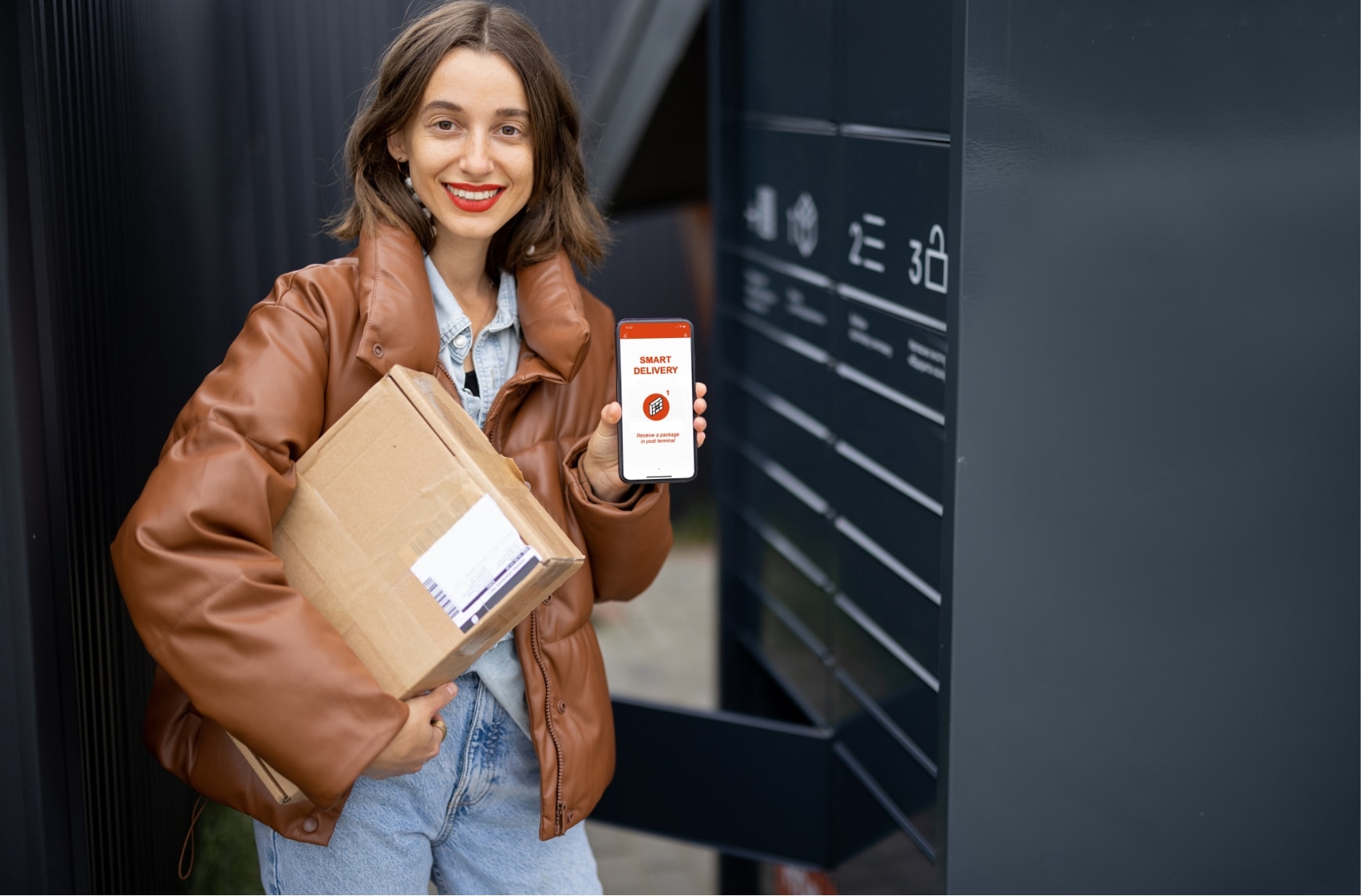
Delivery methods are multiplying.
Provide alternative transportation methods
To deal with climate change, the development of eco-driving is an interesting approach but remains insufficient. Consumers are also asking transporters to “green” their deliveries, while politicians are increasing the number of regulatory constraints for access to town centers.
In urban areas, freight vehicles account for 30% of road space. Many cities, such as Paris, Lyon, Bordeaux or Strasbourg have taken measures to encourage “green” urban delivery. In Strasbourg, for example, Crit’Air 4 vehicles have been banned from the centre since the fall of 2019. For other thermal vehicles, deliveries are only allowed from 6 a.m. to 10 a.m. Those vehicles known as “clean”, such as electric or NGV cars, benefit from an additional hour of delivery time.
To meet these new requirements, companies are progressively renewing their fleets and switching to more ecological methods of transport, such as hybrid cars, three-wheelers, electric bicycles and even drones!
Improve communication with customers
To improve logistics performance in the last mile, optimising information exchanges with the end customer is another very interesting way. A failed delivery is very expensive for the company. The re-delivery of the parcel or its possible handing over to neighbours significantly increases the time, and therefore the delivery costs. But a failed communication or a missed appointment generates above all an enormous loss of profit.
The IFOP (Institut français d’opinion publique), an international polling and market research firm, carried out a survey for Star Service which helps us to better measure the importance of effective communication and tracking:
- For 64% of consumers, delivery is the primary criterion when shopping online, far ahead of price.
- 92% of buyers want to be informed of the route of their package by email or SMS. Tracking shipments is no longer an option!
- 98% of them remain loyal to an e-commerce site that has provided them with a positive delivery experience. A successful delivery is therefore a key loyalty factor.
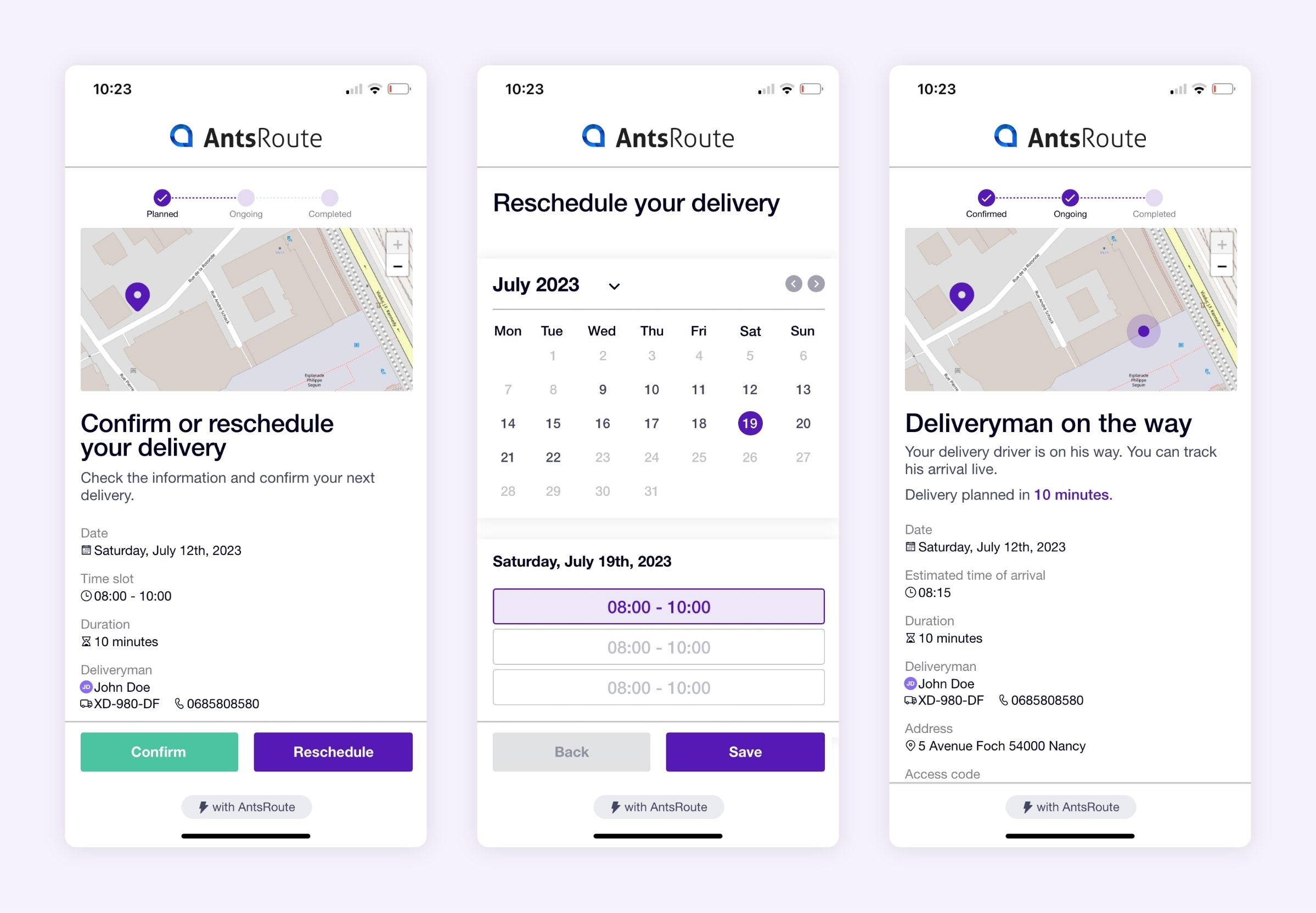
AntsRoute links for rescheduling a delivery and tracking the arrival of a delivery driver.
Thanks to our route management software, you can monitor and analyse many performance indicators related to customer satisfaction:
- Comparison of planned and completed routes.
- Percentage of deliveries completed within the announced time slot.
- Statistics of cancelled or rescheduled deliveries.
- Real-time monitoring of drivers to react quickly in the case of unforeseen events, etc.
You can also send automated notifications to your customers at each stage, and invite them to evaluate the quality of the service as soon as the delivery is completed.
To optimise your routes with AntsRoute, simply create a free 7-day trial account, without any credit card number or commitment!
Optimise your last mile deliveries today
Free 7-day trial | No credit card required

